

When attempting to provide a safe workplace, it is important to consider...
MORE INFO </> Embed
</> Embed
When attempting to provide a safe workplace, it is important to consider everybody who will set foot in that workplace or on it’s grounds. This includes, not only regular staff members but also contractors and sub-contractors.
When planning a project that involves contractors, health and safety must be part of that planning.
This program covers:
Communication between managers, contractors and all staff is a necessity to keep everyone not only productive, but safe.
RUNNING TIME: 11 Minutes
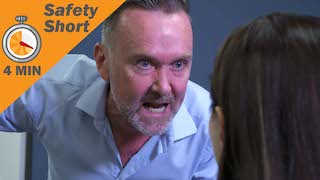

When aggressive incidents arise, it’s important to know how to respond...
MORE INFO </> Embed
</> Embed
When aggressive incidents arise, it’s important to know how to respond to de-escalate them, so that they can be defused before serious harm is done. This safety short gives you some warning signs that you may be dealing with an aggressive individual as well as some do’s and don’ts that can help de-escalate an aggressive situation.
RUNNING TIME: 4 Minutes


Workplace violence and aggression can have devastating effects in a...
MORE INFO </> Embed
</> Embed
Workplace violence and aggression can have devastating effects in a multitude of ways. This safety short gives you a quick overview of some of the negative effects that can result from workplace violence and aggression.
RUNNING TIME: 1 Minute
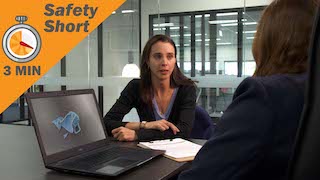

In every workplace there should be a clear and well-understood procedure...
MORE INFO </> Embed
</> Embed
In every workplace there should be a clear and well-understood procedure in place for reporting any incidents of violence or aggression. This safety short covers some concepts and techniques that can help in dealing effectively with a violent or aggressive incident that has occurred in the workplace.
RUNNING TIME: 3 Minutes


Every workplace is different, and it’s important to assess worksites as...
MORE INFO </> Embed
</> Embed
Every workplace is different, and it’s important to assess worksites as a means of identifying methods for reducing the likelihood of violent incidents occurring. This safety short outlines some of the prevention measures that can be taken to avoid violence and aggression.
RUNNING TIME: 5 Minutes
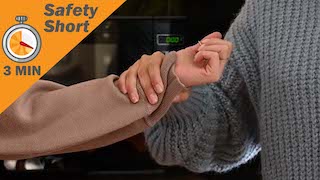

Workplace violence and aggression can be defined as, any act in which a...
MORE INFO </> Embed
</> Embed
Workplace violence and aggression can be defined as, any act in which a person is abused, threatened, intimidated or assaulted during the course of their employment. This safety short covers some examples of violence and aggression that someone could potentially encounter as a result of their work.
RUNNING TIME: 3 Minutes


Hepatitis B, Hepatitis C and HIV are three Bloodborne Diseases which are a...
MORE INFO </> Embed
</> Embed
Hepatitis B, Hepatitis C and HIV are three Bloodborne Diseases which are a concern in the workplace, but what is a Bloodborne Disease? How can it be passed from one person to another? What can you do to reduce your risk of exposure? And what should you do if you may have been exposed to a Bloodborne Disease?
This program covers:
The objective of this program is to increase awareness of Bloodborne Pathogens and by so doing, increase awareness of the standards for worker responsibility in observing and being active in daily safety procedures.
Bloodborne Pathogens can cause disease but the risks should not be overdramatised. Following procedures that have been laid down will go a long way to protect you from infection.
DURATION: 15 Minutes


When attempting to provide a safe workplace, it is important to consider...
MORE INFO </> Embed
</> Embed
When attempting to provide a safe workplace, it is important to consider everybody who will set foot in that workplace or on it’s grounds. This includes, not only regular staff members but also contractors and sub-contractors.
When planning a project that involves contractors, health and safety must be part of that planning.
This program covers:
Communication between managers, contractors and all staff is a necessity to keep everyone not only productive, but safe.
RUNNING TIME: 11 Minutes
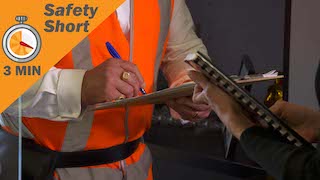

At the beginning of the job, contractors, along with everyone doing work in...
MORE INFO </> Embed
</> Embed
At the beginning of the job, contractors, along with everyone doing work in the location, should receive a safety induction. This safety short gives you a quick overview of what a safety induction is and what information should be included in it.
RUNNING TIME: 3 Minutes


Consideration of health and safety issues must begin at the planning stage,...
MORE INFO </> Embed
</> Embed
Consideration of health and safety issues must begin at the planning stage, before the contractor has started work. This safety short covers some important questions that should be asked when planning work for a contractor and potential hazards a contractor may encounter.
RUNNING TIME: 5 Minutes
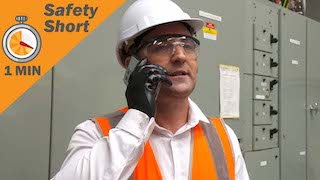

One of the most important considerations in contract management is so-called...
MORE INFO </> Embed
</> Embed
One of the most important considerations in contract management is so-called “task creep”. This can occur when, after the contractor’s task is assigned, the job requires more work than was originally agreed. This safety short briefly explains what ”task creep” is and why it’s an important consideration.
RUNNING TIME: 1 Minute
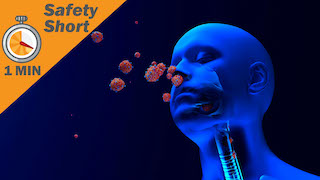

Coronaviruses are a large group of viruses that can cause illnesses ranging...
MORE INFO </> Embed
</> Embed
Coronaviruses are a large group of viruses that can cause illnesses ranging from the common cold to more severe diseases. This safety short examines the various ways in which Coronaviruses can be spread.
RUNNING TIME: 1 Minute


Coronaviruses are a large group of viruses that can cause illnesses ranging...
MORE INFO </> Embed
</> Embed
Coronaviruses are a large group of viruses that can cause illnesses ranging from the common cold to more severe diseases such as Middle East Respiratory Syndrome (MERS) and Severe Acute Respiratory Syndrome (SARS).
As a family, coronaviruses are common across the globe. Recently, a new strain of coronavirus was discovered that has not previously been identified in humans. This new coronavirus, sometimes referred to as the novel coronavirus, leads to Coronavirus disease, also known as COVID-19.
This program covers:
The objective of this program is to increase awareness of Coronaviruses in general, and COVID-19 more specifically, and by so doing, increase awareness of the standards for worker responsibility in observing and being active in daily safety procedures.
Following procedures that have been laid down will go a long way to protect you from infection.
RUNNING TIME: 10 Minutes
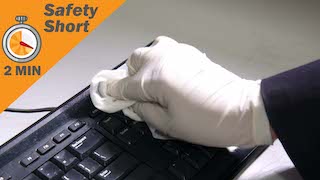

As a family, coronaviruses are common across the globe. This safety short...
MORE INFO </> Embed
</> Embed
As a family, coronaviruses are common across the globe. This safety short outlines some of the control measures that can be taken to prevent their spread.
RUNNING TIME: 2 Minutes
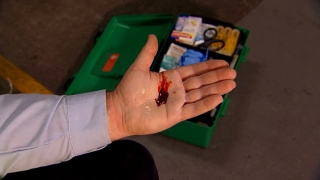

There are numerous injuries that can occur in the workplace and amongst the...
MORE INFO </> Embed
</> Embed
There are numerous injuries that can occur in the workplace and amongst the most common are Cuts and Bleeding. These can range from small scratches through to serious cuts, embedded objects, amputations and injuries that can lead to internal bleeding.
Many bleeding incidents are not severe and can be treated with simple first-aid and the body’s own ability to clot. Some are more serious and require urgent action. Serious bleeding that is not stopped quickly is life threatening.
This program covers:
The objective of this program is to highlight the major hazard areas associated with Cuts and Bleeding and by so doing, increase awareness of the standards for worker responsibility in observing and being active in daily safety procedures.
RUNNING TIME: 9 Minutes
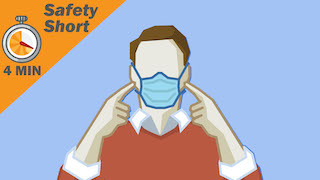

Face Masks are an effective control measure that can be used to control the...
MORE INFO </> Embed
</> Embed
Face Masks are an effective control measure that can be used to control the spread of Coronaviruses. This safety short gives a quick overview of common mask types and how to use them correctly.
RUNNING TIME: 4 Minutes
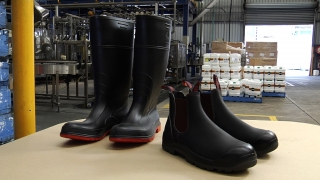

Our feet provide us with balance and support for our bodies and enable us to...
MORE INFO </> Embed
</> Embed
Our feet provide us with balance and support for our bodies and enable us to walk, run, drive, operate machinery, play sport and so on.
This program addresses:
Falling objects cause the largest number of foot injuries in the workplace, there are however numerous other potential hazards that can lead to injuries.
This program is aimed at all personnel who may come into contact with any of these hazards.
RUNNING TIME: 10 Minutes
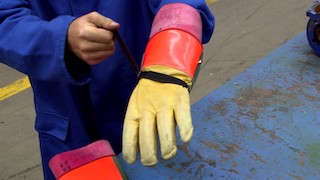

Many of the tasks we perform involve the use of our hands. Because of the...
MORE INFO </> Embed
</> Embed
Many of the tasks we perform involve the use of our hands. Because of the versatile nature of our hands we are constantly putting them at risk.
And, in order to reduce that risk, it is critical that we are aware of what hazards exist and we know what measures we should take to help prevent accidents from occurring.
This program covers:
By following safe work procedures, using tools only for their intended purposes and wearing personal protective equipment whenever appropriate, we can reduce the number of hand injuries dramatically.
RUNNING TIME: 12 Minutes
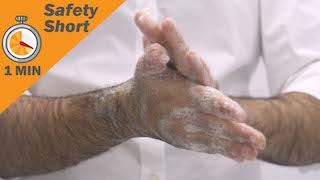

Effective hand washing technique is crucial in helping avoid infectious...
MORE INFO </> Embed
</> Embed
Effective hand washing technique is crucial in helping avoid infectious diseases and maintaining good health. This safety short gives you a quick overview of how to thoroughly clean your hands.
RUNNING TIME: 1 Minute


Hand held power tools, hand guided equipment, and holding materials being...
MORE INFO </> Embed
</> Embed
Hand held power tools, hand guided equipment, and holding materials being worked by hand feed machines, can all transmit vibrations to the hands and arms. Regular exposure to hand-arm vibration can lead to what is known as hand-arm vibration syndrome, also referred to as HAVS.
The symptoms and effects of HAVS most commonly result in:
Symptoms usually last for a short time, however, with continued exposure to vibration the symptoms may have longer lasting effects, and with time, usually a few years, could become permanent, causing ongoing pain.
Awareness of the problem of hand-arm vibration syndrome, a commitment to identify hazards and reduce risk levels, combined with an individual commitment to health and safety, will help prevent HAVS issues occurring.
RUNNING TIME: 7 Minutes
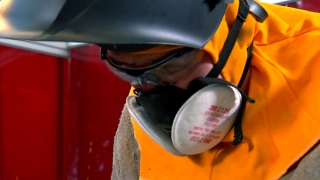

In many workplaces the potential for the inhalation of hazardous...
MORE INFO </> Embed
</> Embed


Most of our activities take place above ground level. In fact, many occur...
MORE INFO </> Embed
</> Embed
Most of our activities take place above ground level. In fact, many occur between 1 and 2 metres above the ground and frequently much higher........This puts the head in the firing line of many potential hazards.
Hazards that include:
Types of injuries include:
The preventative measures that need to be addressed are covered in detail. A head injury could be the first, the worst and last injury you will ever receive.
RUNNING TIME: 10 Minutes